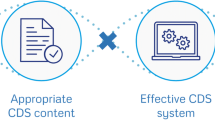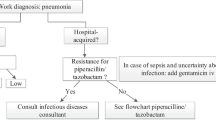Abstract
This study aims to determine what the initial disposition of physicians towards the use of Clinical Decision Support Systems (CDSS) based on Computerised Clinical Guidelines and Protocols (CCGP) is; and whether their prolonged utilisation has a positive effect on their intention to adopt them in the future. For a period of 3 months, 8 volunteer paediatricians monitored each up to 10 asthmatic patients using two CCGPs deployed in thee-GuidesMed CDSS. A Technology Acceptance Model (TAM) questionnaire was supplied to them before and after using the system. Results from both questionnaires are analysed searching for significant improvements in opinion between them. An additional survey was performed to analyse the usability of the system. It was found that initial disposition of physicians towards e-Guidesmed is good. Improvement between the pre and post iterationsof the TAM questionnaire has been found to be statistically significant. Nonetheless, slightly lower values in the Compatibility and Habit variables show that participants perceive possible difficulties to integrate e-GuidesMed into their daily routine. The variable Facilitators shows the highest correlation with the Intention to Use. Usabilityof the system has also been rated very high and, in this regard, no fundamental flaw has been detected. Initial views towards e-GuidesMed are positive, and become reinforced after continued utilisation of the system. In order to achieve an effective implementation, it becomes essential to facilitate conditions to integrate the system intothe physician’s daily routine.


Similar content being viewed by others
References
Field, M., and Lohr, K. (Eds.), Clinical practice guidelines: Directions for a new program. Washington, DC: Institute of Medicine, National Academy Press, 1990.
Rosenfeld, R., and Shiffman, R., Clinical practice guideline development manual: A quality-driven approach for translating evidence into action. Otolaryngol. Head Neck Surg. 140(6 Suppl 1):1–43, 2009.
Isern, D., and Moreno, A., Computer-based execution of clinical guidelines: A review. Int. J. Med. Inform. 77:787–808, 2008.
Tu, S., Campbell, J.R., Glasgow, J., Nyman, M.A., McClure, R., McClay, J., Parker, C., Hrabak, K.M., Berg, D., Weida, T., Mansfield, J.G., Musen, M.A. and Abarbanel, R.M., The sage guideline model: Achievements and overview. J. Am. Med. Inform. Assoc. 14(5):589–598, 2007.
Latoszek-Berendsen, A., Tange, H., van den Herik, H., and Hasman, A., From clinical practice guidelines to computer-interpretable guidelines. Methods Inf. Med. 49:550–570, 2010.
Lugtenberg, M., van Schaick, J.M.Z., Westert, G.P., and Burgers, J.S., Why don’t physicians adhere to guideline recommendations in practice? An analysis of barriers among dutch general practitioners. Implement. Sci. 4:54, 2009.
Bracha, Y., Brottman, G.M., and Carlson, A., Physicians, guidelines and cognitive tasks. Eval. Health Prof. 34:309–335, 2011.
Spallek, H., Song, M., Polk, D.E., Bekhuis, T., Frantsve-Hawley, J., and Aravamudhan, K., Barriers to implementing evidence-based clinical guidelines: A survey of early adopters. J. Evid. Based Dent. Pract. 10:195–206, 2010.
Bouaud, J., Séroussi, B., Falcoff, H., and Venot, A., Design factors for success or failure of guideline-based decision support systems: An hypothesis involving case complexity. In: Proceedings of The AMIA Annual Symposium. pp. 71–75, 2006.
Damiani, G., Pinnarelli, L., Colosimo, S., Almiento, R., Sicuro, L., Galasso, R., Somella, L., and Ricciardi, W., The effectiveness of computerized clinical guidelines in the process of care: A systematic review. BMC Health Serv. Res. 10:2, 2010.
Heselmans, A., de Velde, S.V., Donceel, P., Aertgeerts, B., and Ramaekers, D., Effectiveness of electronic guideline-based implementation systems in ambulatory care settings - a systematic review. Implement. Sci. 4:82, 2009.
Barrena, R., Pikatza, J.M., Iruetaguena, A., Segundo, U., Buenestado, D., Elorz, J., and Aldamiz-Echevarria, L., e-Guidesmed: support for translation of clinical guidelines. In: Moen, A. (Ed.), XXIII International Conference of the European Federation for Medical Informatics, MIE 2011/CD/Demonstrations, 2011.
Pikatza, J.M., Iruetaguena, A., Buenestado, D., Segundo, U., Garcia, J.J., Aldamiz-Echevarria, L., Elorz J., Barrena, R., and Sanjurjo, P., Towards an effective knowledge translation of clinical guidelines and complementary information. In: Advances in Intelligent and Soft-Computing Series of Springer Verlag. Vol. 79, pp. 409–416, 2010.
Davids, F.D., Perceived usefulness, perceived ease of use, and user acceptance of information technology. MIS Q. 13(3):319–340, 1989.
Yousafzai, S.Y., Foxall, G.R., and Pallister, J.G., Technology acceptance: A meta-analysis of the tam: Part 1. J. Mod. Manag. 2(3):251–280, 2007.
Holden, R.J., and Karsh, B.T., The technology acceptance model: Its past and its future in health care. J. Biomed. Inform. 43(1):159–172, 2010.
Wilkins, M.A., Fact ors influencing acceptance of electronic health records in hospitals. Perspect. Health Inf. Manag. 6(1f), 2009.
Fishbein, M., and Ajzen, I., Belief, attitude, intentions and behaviour: An introduction to theory and research. Reading, MA: Addison-Westley, 1975.
Yan, H., and Yoo, Y., It’s all about attitude: Revisiting the technology acceptance model. Decis. Support. Syst. 38:19–31, 2004.
Venkatesh, V., and Davis, F.D., A theoretical extension of the technology acceptance model: Four longitudinal field studies. Manag. Sci. 46(2):186–204, 2000.
Venkatesh, V., and Bala, H., Technology acceptance model 3 and a research agenda on interventions. Decis. Sci. 39(2):273–315, 2008.
Venkatesh, V., Morris, M.G., Davis, G.B., and Davids, F.D., User acceptance of information technology: Toward a unified view. MIS Q. 27(3):425–478, 2003.
Peleg, M., Shachak, A., Wang, D., and Karnieli, E., Using multi-perspective methodologies to study users interactions with the prototype front end of a guideline-based decision support system for diabetic foot care. Int. J. Med. Inform. 78:482–493, 2009.
Melas, C.D., Zampetakis, L.Z., Dimopoulou, A., and Moustakis, V., Modeling the acceptance of clinical information systems among hospital medical staff: An extended tam model. J. Biomed. Inform. 44:553–564, 2011.
Orruno, E., Gagnon, M.P., Asua, J., and Abdeljelilre, A.B., Evaluation of teledermatology adoption by health-care professionals using a modified technology acceptance model. J. Telemed. Telecare 17(6):303–307, 2011.
Gagnon, M.P., Orruo, E., Asua, J., Abdeljelil, A.B., and Emparanza, J., Using a modified technology acceptance model to evaluate health professionals’ adoption of a new telemonitoring system. Telemed. J. E. Health 18:54–59, 2012.
Trafton, J., Martins, S., Michel, M., Lewis, E., Wang, D., Combs, A., Scates, N., Tu, S., and Goldstein, M.K., Evaluation of the acceptability and usability of a decision support system to encourage safe and effective use of opioid therapy for chronic, noncancer pain by primary care providers. Pain Med. 11:575–585, 2010.
Lomotan, E., Hoeksema, L.J., Edmonds, D.E., Ramı’rez-Garnica, G., Shiffman, R.N., and Horwitz, L.I., Evaluating the use of a computerized clinical decision support system for asthma by pediatric pulmonologist. Int. J. Med. Inform. 81:157–165, 2012.
Osakidetza - Basque Health Service Healthcare Department of the Basque Government, Guia de Practica Clinica sobre Asma. Basque Country, Spain: Donostia-San Sebastian, 2006.
British Thoracic Society, Scottish Intercollegiate Guidelines Network (SIGN). British Intercollegiate Network. British Guideline on the Management of Asthma. Edinburgh, Scotland, UK, 2008 (updated 2012).
Nielsen, J., Estimating the number of subjects needed for a thinking aloud test. Int. J. Hum. Comput. Interact. 41:385–97, 1994.
Acknowledgments
The authors would like to thank the physicians that took part in our study. The authors also thank J. López-Cuadrado and T.A. Pérez for their comments on the manuscript. This work was supported by funding received from the Department of Education, Universities and Research of the Basque Government (Grant No. BFI-09-270), the UPV/EHU [GIU08/27, INF10/58, GIU11/28 and UFI11/19], Gipuzkoa Regional Council [OF53/2011], the Department of Industry, Commerce and Tourism—Basque Government [S-PE09UN60 and S-PE11UN115], and the Spanish Ministry of Science and Innovation [TIN2009-14 159-C05-03].
Conflict of interest
No author reports a conflict of interest with this study.
Author information
Authors and Affiliations
Corresponding author
Rights and permissions
About this article
Cite this article
Buenestado, D., Elorz, J., Pérez-Yarza, E.G. et al. Evaluating Acceptance and User Experience of a Guideline-based Clinical Decision Support System Execution Platform. J Med Syst 37, 9910 (2013). https://doi.org/10.1007/s10916-012-9910-7
Received:
Accepted:
Published:
DOI: https://doi.org/10.1007/s10916-012-9910-7




